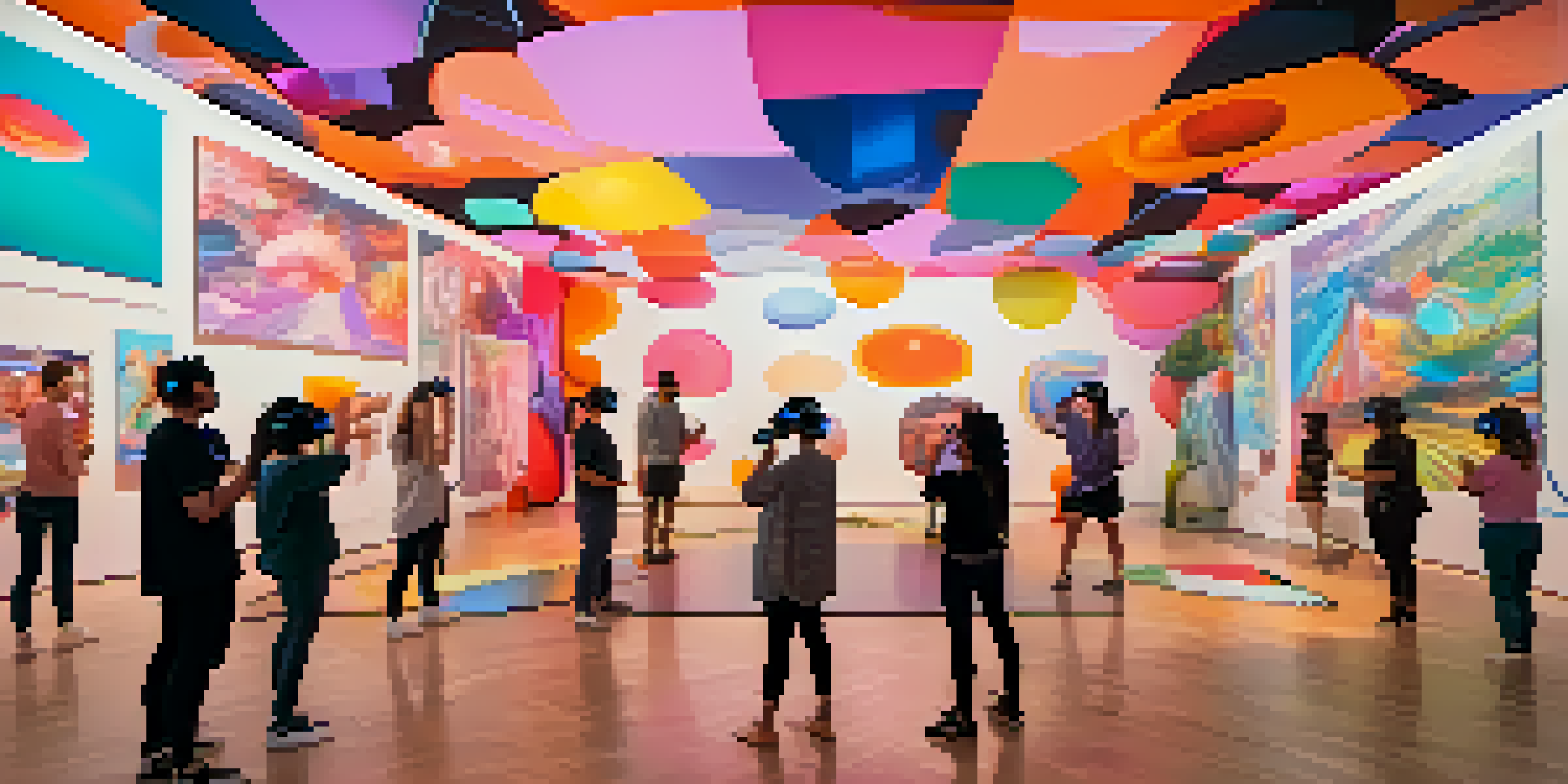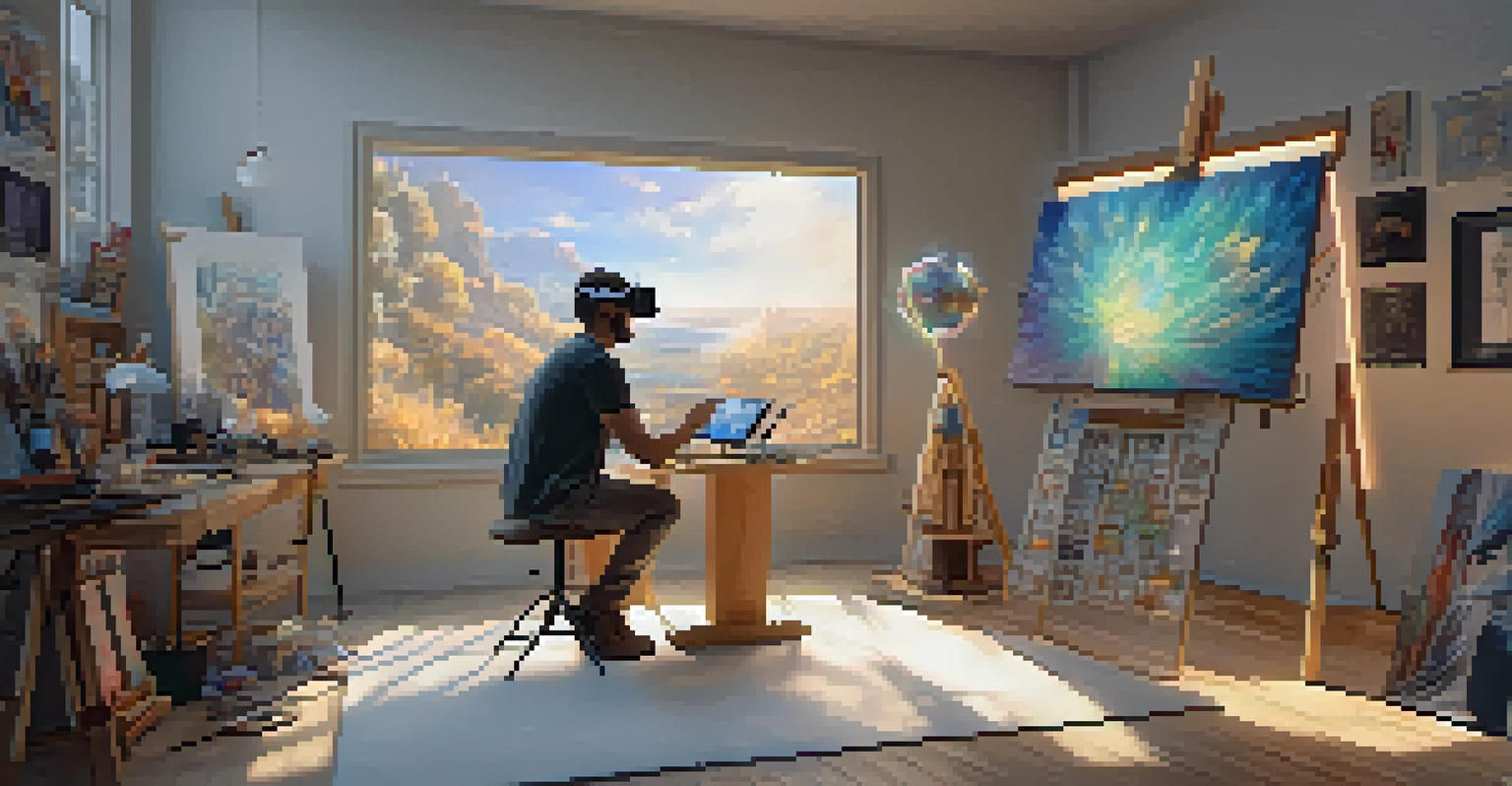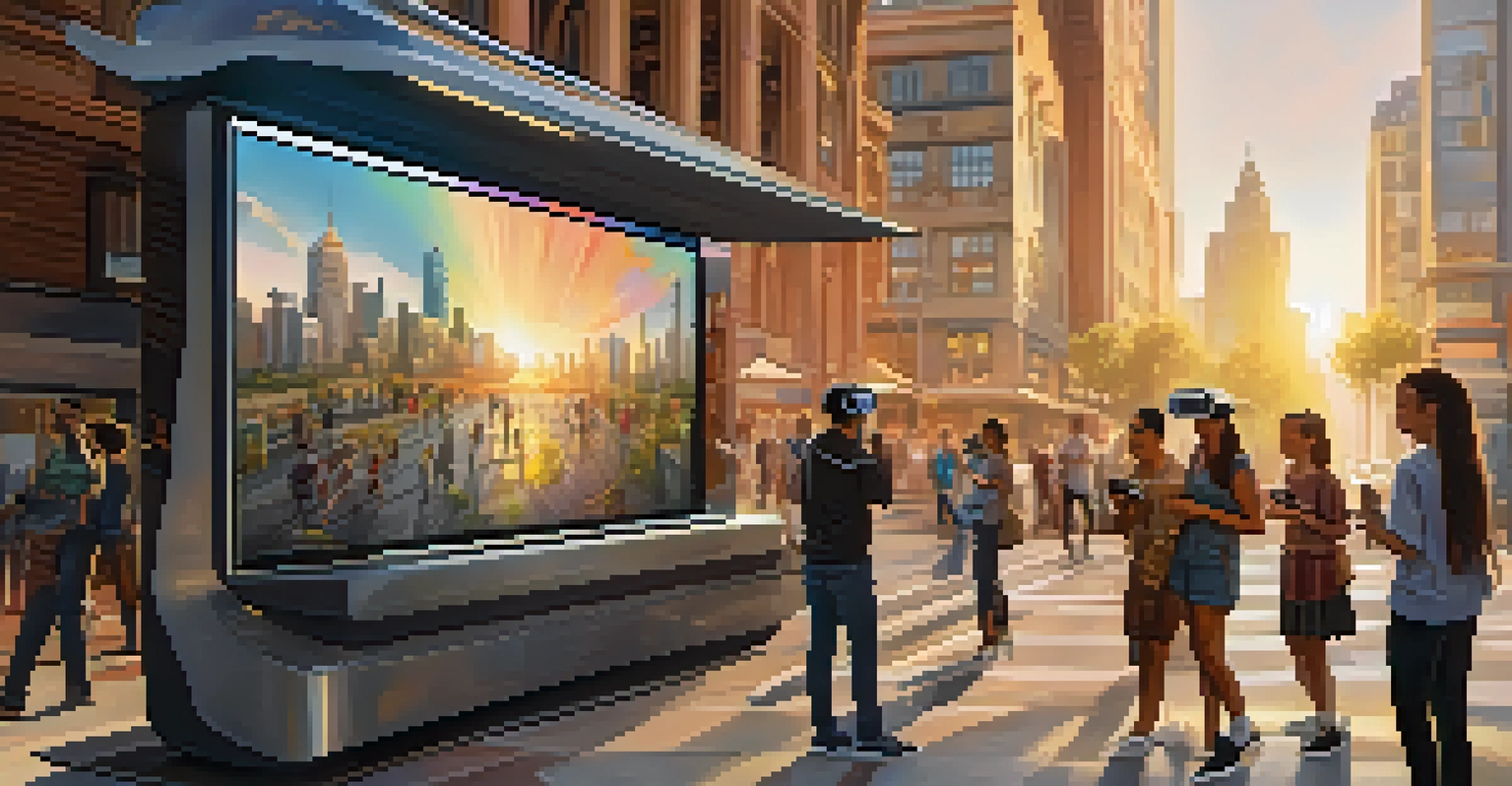Virtual Reality's Impact on Contemporary Art Experiences

Defining Virtual Reality in the Art World
Virtual reality (VR) is a technology that immerses users in a computer-generated environment, allowing them to interact with 3D spaces and objects as if they were real. In the context of contemporary art, VR opens up new avenues for creativity and experience. Artists can create fully immersive installations that transport viewers beyond traditional gallery settings, reshaping how art is perceived and experienced.
Art is not freedom from discipline, but disciplined freedom.
Imagine stepping into a painting or sculpture where you can explore every angle and detail up close. This level of interaction was unimaginable just a few years ago, but VR technology has made it possible. It allows artists to break the confines of physical space and engage audiences in ways that traditional mediums simply cannot.
Related Resource
As VR continues to evolve, it is becoming a staple in contemporary art, expanding the creative toolkit for artists. This technology not only enhances the viewer's experience but also challenges the very definition of art itself, prompting discussions about what constitutes a work of art in a virtual realm.
Enhancing Viewer Engagement Through Immersion
One of the most significant impacts of VR on contemporary art is its ability to enhance viewer engagement. When people don a VR headset, they enter a different world where they can interact with the artwork on a personal level. This immersive experience creates a deeper emotional connection, making art more accessible and relatable to a diverse audience.

For instance, VR installations often invite viewers to participate in the artwork, allowing them to become part of the narrative. This active participation transforms passive observation into an engaging experience, where viewers can influence the outcome of the art they are experiencing. Such interactivity fosters a sense of ownership and connection that traditional art forms may lack.
VR Transforms Art Engagement
Virtual reality enhances viewer engagement by allowing personal interaction with art, creating deeper emotional connections.
Moreover, VR can help break down barriers, allowing individuals who may not typically visit galleries or museums to experience art in their own environments. This democratization of art access encourages broader appreciation and understanding, inviting more voices into the conversation about contemporary art.
Pushing Creative Boundaries with VR Technology
Virtual reality is not just a new medium; it's a tool that pushes the creative boundaries of artists. By utilizing VR, artists can experiment with space, time, and perception in ways that were previously unimaginable. This technology allows for the creation of dynamic, evolving artworks that can change based on viewer interaction.
The future belongs to those who believe in the beauty of their dreams.
Consider an artist who designs a virtual landscape that morphs based on a viewer's emotions or movements. This kind of responsive art challenges the traditional static nature of visual art, creating a dialogue between the artwork and the viewer. Such experiences can provoke thought and inspire new interpretations of what art can be.
Related Resource
As artists explore the capabilities of VR, they often collaborate with technologists and developers, resulting in innovative projects that blend artistry with cutting-edge technology. This collaboration not only expands the artists' horizons but also enriches the technology itself, fostering a creative ecosystem that benefits both fields.
The Role of VR in Art Education
VR is revolutionizing art education by providing students with immersive learning experiences. Traditional methods often involve textbooks and lectures, but VR can transport students into historic art movements or let them walk through a virtual studio of a renowned artist. This hands-on approach deepens understanding and appreciation of art history and techniques.
Imagine a classroom where students can explore the techniques of the Old Masters while standing in a virtual replica of a famous museum. They can analyze brush strokes, colors, and compositions in a way that’s interactive and engaging. This innovative approach not only makes learning more enjoyable but also helps to retain knowledge more effectively.
Global Connectivity for Artists
VR connects artists with global audiences, breaking geographical barriers and democratizing access to diverse artistic expressions.
Additionally, VR allows art students to experiment with their creations in a risk-free environment. They can create and manipulate 3D sculptures or paintings without the constraints of physical materials, encouraging creativity and experimentation that can lead to groundbreaking ideas.
Connecting Artists and Audiences Globally
One of the most exciting aspects of VR is its ability to connect artists and audiences around the globe. Virtual exhibitions can be accessed by anyone with a headset, breaking geographical barriers and allowing for a more inclusive art experience. This global reach means that artists can share their work with diverse audiences, fostering a more interconnected art community.
For example, a small artist in a remote village can showcase their work to viewers across continents, gaining exposure and recognition that might have been impossible through traditional means. This democratization of art access not only benefits artists but also enriches the experiences of viewers who can explore a wider variety of artistic expressions.
Related Resource
Furthermore, virtual art fairs and galleries are emerging, where collectors and enthusiasts can interact, purchase artwork, and engage in discussions without leaving their homes. This shift is reshaping the art market and creating new opportunities for artists to thrive in a digital-first world.
Challenges and Limitations of VR in Art
Despite its many advantages, the integration of VR in contemporary art does come with challenges. One significant issue is the accessibility of the technology itself. While VR headsets and software have become more affordable, there is still a digital divide that limits who can experience these innovative art forms. Not everyone has access to the necessary equipment or internet speeds to engage fully with VR art.
Additionally, the learning curve associated with VR can be daunting for both artists and audiences. Artists need to invest time in mastering new technologies, while viewers may feel overwhelmed by the technical aspects of VR experiences. This can lead to a disconnect where the technology overshadows the art itself, making it crucial for creators to strike a balance.
Challenges of VR Accessibility
Despite its advantages, VR faces challenges like accessibility, technological learning curves, and environmental concerns that need addressing.
Lastly, as with any emerging medium, there is the question of sustainability. The environmental impact of VR technology, from manufacturing devices to energy consumption, raises concerns for environmentally conscious artists and viewers alike. It is essential for the art community to address these issues as they embrace the digital future.
The Future of Virtual Reality in Art
Looking ahead, the future of virtual reality in contemporary art is filled with possibilities. As technology continues to advance, we can expect even more immersive experiences that blur the lines between the physical and digital realms. Artists will likely experiment with mixed reality, combining VR with augmented reality (AR) to create even more dynamic interactions.
Moreover, as the technology becomes more accessible, we may see a surge in VR art installations in public spaces, making art a part of everyday life. Imagine walking through a city and encountering a VR mural that comes to life with your interaction, engaging the community in unique ways. This potential for public engagement can help shift perceptions of art from something exclusive to an inclusive experience for all.

Ultimately, the fusion of virtual reality and contemporary art holds the potential to redefine how we create, experience, and appreciate art. As artists and audiences continue to explore this digital frontier, we can anticipate a vibrant future where art transcends traditional boundaries, fostering a richer, more diverse artistic landscape.